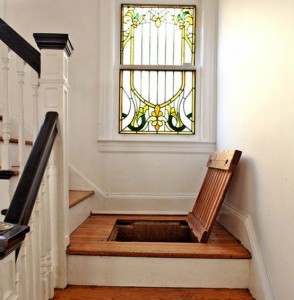Another playing technique that I employ during this middle stages of memorization is to identify and work with what I call "trap doors." These are areas within a piece that look, sound, and/or feel like similar to other areas in the same piece. These can be in the same key, but you might even find trap doors in different keys. When one is unaware of a trap door, it's very easy to jump from that place in a piece to an entirely different location. This isn't so bad if you don't jump too far, but, in one case, I found myself in a trap door that opened at the beginning of a piece and took me to about twenty measures from the end! (The audience should have gotten its money back.)
An obvious example of a trap door would be jumping from the exposition directly to the recapitulation in a sonata form movement. Another example can be found in the C# Prelude from Bach's first book of The Well-Tempered Clavier. Here, it's very easy to jump from anywhere in the first eight measures to anywhere in the eight measures starting at m.55--or, when you get to m.55, in the opposite direction. It's also easy to confuse m.63 with m.87. And in Scarlatti's K. 517, it's easy to jump from one key to another by taking m.16 to the sequence that begins at m.68. Owch!
At this stage in your practice, you need to identify each and every one of your trap doors. Even if you're playing your pieces straight through without any problems, it's important to realize that lapses can occur, and you must prepare for them before they occur. To that end, knowing the location of each trap door is just about as important as knowing your landmarks. Make sure that, if you fall through that trap door, you have an exit strategy that doesn't include ending your piece several minutes early.
I often unwillingly uncover trap doors just before a recital performance. I owe this to being more self-conscious than in my usually relaxed practice. In fact, I've uncovered trap doors during my warm-up time just before a concert. This is extremely nerve wracking! Because this has happened to me several times, I make every effort possible to find those nasty pitfalls early in the memorization process. They aren't always so evident (as in my Scarlatti example), so you may not identify them until you've memorized the piece and entered the middle stages of memorization.
In my previous post, I wrote about the practice technique of making yourself nervous. You can use your trap doors to create lapse-like situations. Once you've created a situation for yourself, try to come up with as many escape routes as possible, including improvisation. You can't guarantee that the exact same scenario will happen in concert, but having a familiarity with all of your options will help you to handle any crisis with grace and élan.

No comments:
Post a Comment